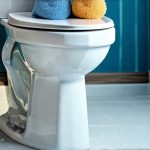Embarrassment is a deeply human experience, but it can be particularly acute when linked to bodily functions – especially those considered less “socially acceptable.” Frequent bathroom visits, whether due to a medical condition, dietary choices, anxiety, or simply individual physiology, can become a source of significant distress and social awkwardness. The fear of judgment, the disruption caused to schedules, and the feeling of being “different” can all contribute to a cycle of worry and avoidance. This article aims not to diagnose or treat any underlying medical issues (always consult with a healthcare professional for that!), but rather to offer practical strategies and coping mechanisms for managing the emotional toll of frequent bathroom trips and reclaiming a sense of confidence and control in everyday life.
The shame surrounding bodily functions is often rooted in societal expectations and cultural norms. We’re taught, implicitly or explicitly, to maintain a certain level of control over our bodies, and deviations from that norm can feel like personal failings. This is compounded by the fact that discussions about these topics are frequently taboo, leaving individuals feeling isolated and unable to seek support. Understanding that this embarrassment is normal – many people experience it – is the first step towards mitigating its impact. It’s also important to remember that needing to use the restroom is a natural bodily function, and there’s absolutely no reason to feel ashamed of that fact. This article will explore ways to navigate social situations, address internal anxieties, and build resilience in the face of this challenging experience.
Understanding the Source of Embarrassment
The roots of embarrassment related to frequent bathroom visits are often multifaceted. It’s rarely just about the act itself; it’s usually intertwined with perceived judgment from others, anxiety surrounding potential accidents or inconveniences, and a general feeling of being out of control. Consider what specifically triggers your embarrassment. Is it the fear of interrupting a meeting? The worry about what coworkers might think? Or is it a deeper-seated concern about appearing “weak” or “different”? Identifying these specific anxieties allows you to address them more effectively.
Furthermore, societal expectations play a significant role. We live in a culture that often prioritizes productivity and efficiency, leaving little room for bodily needs. This can create pressure to suppress natural urges, leading to increased anxiety and potentially exacerbating the problem. The feeling of needing to “hide” or apologize for using the restroom reinforces the idea that it’s something shameful. Breaking down these internal narratives requires conscious effort and self-compassion. It’s about reframing your mindset and recognizing that prioritizing your health is not a sign of weakness, but rather an act of self-care.
Finally, consider whether underlying medical conditions or anxieties are contributing to the issue. Conditions like Irritable Bowel Syndrome (IBS), overactive bladder, anxiety disorders, or even dietary sensitivities can all lead to increased bathroom frequency. If you haven’t already, it’s crucial to consult with a healthcare professional to rule out any underlying causes and receive appropriate treatment. Addressing the physical aspect of the problem can often alleviate some of the emotional distress associated with it. It might also be worth exploring how to help your bladder recover from infection if you suspect an underlying issue.
Coping Strategies for Social Situations
Navigating social situations when you frequently need to use the restroom can feel daunting, but it’s entirely possible to do so with grace and confidence. Proactive planning is key. Before attending an event or meeting, scout out the location if possible to identify restroom locations. This simple step can reduce anxiety and give you a sense of control. If scouting isn’t feasible, arrive early to familiarize yourself with the surroundings.
Don’t be afraid to discreetly excuse yourself when needed. A simple “Excuse me, I need to step away for a moment” is often sufficient. You don’t owe anyone an explanation, and offering one can actually draw more attention to the situation than necessary. Keep it brief and avoid apologizing excessively – you have nothing to apologize for! Practice these phrases in your mind beforehand so they feel natural and comfortable when you need to use them.
Another helpful strategy is to choose seating strategically. Opting for seats near an exit or restroom can provide a sense of security and ease. If attending a meeting, consider sitting at the back or on the aisle, allowing you to slip away more discreetly. Remember that most people are focused on their own concerns and unlikely to notice or judge your brief absence. Focusing on the conversation rather than worrying about your bladder can also help minimize anxiety. For those who struggle with frequency, how to plan your day with frequent urination can be a helpful resource for proactive management.
Managing Internal Anxiety
Anxiety often fuels embarrassment, creating a vicious cycle of worry and self-consciousness. One effective technique for managing this anxiety is mindfulness. Mindfulness involves paying attention to the present moment without judgment. When you feel anxious about needing to use the restroom, take a few deep breaths and focus on your senses – what do you see, hear, smell, taste? This can help ground you in the present and interrupt the cycle of negative thoughts.
Cognitive Behavioral Therapy (CBT) techniques can also be incredibly helpful. CBT involves identifying and challenging negative thought patterns. For example, if you find yourself thinking “Everyone will think I’m weird,” challenge that thought by asking yourself: Is that really true? What evidence do I have to support that belief? Is there another way to interpret the situation? Replacing these negative thoughts with more realistic and compassionate ones can significantly reduce anxiety.
Consider practicing self-compassion. Treat yourself with the same kindness and understanding you would offer a friend. Acknowledge that needing to use the restroom frequently is not a character flaw, and it doesn’t make you less worthy of respect or acceptance. Remind yourself that everyone has bodily functions, and there’s nothing inherently shameful about yours.
Building Resilience & Seeking Support
Resilience isn’t about avoiding difficult emotions; it’s about developing the ability to bounce back from them. One way to build resilience is through self-care. Prioritize activities that bring you joy and relaxation, such as spending time in nature, listening to music, or practicing a hobby. Taking care of your physical and emotional well-being can strengthen your coping mechanisms and reduce overall anxiety.
Don’t underestimate the power of social support. Talking to trusted friends, family members, or a therapist about your struggles can provide validation and perspective. Sharing your experiences can help you feel less alone and more empowered. If you’re comfortable doing so, consider joining a support group for people with similar conditions. Connecting with others who understand what you’re going through can be incredibly therapeutic. Understanding the difference between UTIs and other infections may also offer peace of mind; how to distinguish cystitis from yeast infections provides valuable information for recognizing symptoms.
Finally, remember that managing embarrassment is an ongoing process. There will be times when anxiety creeps in, and that’s okay. Be patient with yourself, celebrate your progress, and continue to practice the coping strategies outlined above. You are not defined by your bodily functions, and you deserve to live a life free from shame and self-consciousness. It’s about accepting yourself fully, flaws and all, and embracing your individuality.





















